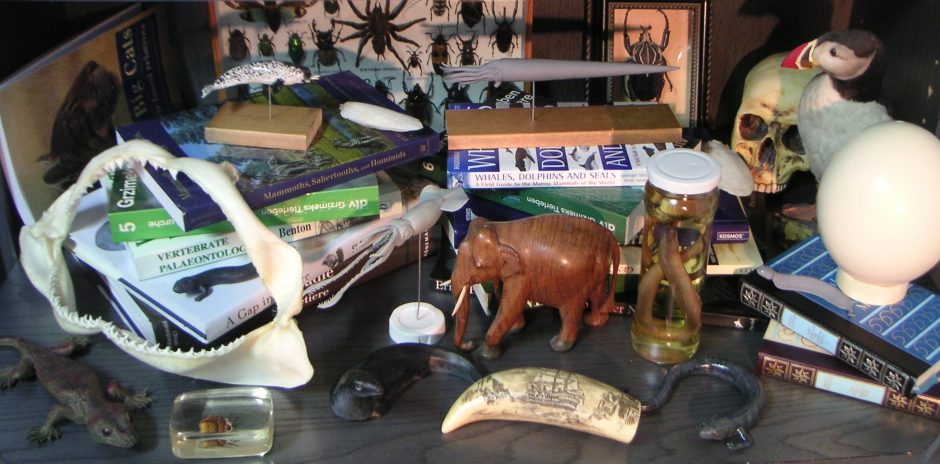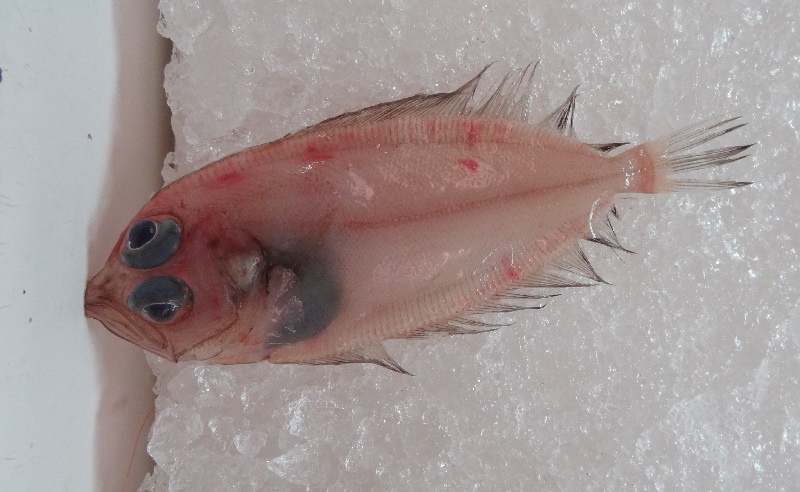Fish markets can be a great opportunity to see animals you will hardly ever see in any zoo aquarium or in TV. Alcohol specimens in museum collection are often already far away from their original life appearance, because the tissue shrinks to some degree, they lose most of their colouration, transclucience and other features of the living animal you can´t even fully reproduce in a really good painted taxidermy specimen or life-like model. Seeing an animal in the flesh, and not just its preserved and modified body, can teach you much more about its physiology than a faded specimen in a jar. So I was quite eager to take photos when I was recently visiting a fish market at Mahón, the capital of Menorca.
One of the very first fish I disovered on display was a quite weird-looking flatfish of around 15-20 cm, with a nearly colourless and partially translucient body, huge bulging eyes and long jaws. It seems to be Lepidorhombus boscii, a close relative of the megrim or whiff (Lepidorhombus whiffiagonis). Sadly the dorsal and anal fin were quite damaged, but it seems there were originally two dark spots in the area close to the caudal fin, what would indicate that this was really L. boscii.
Flatfish are already bizarre per se, after all, they have some of the most radical anatomical modifications among all chordates at least. Keep this in mind if you´re eating the next time a sole or a halibut, this animals have evolved into something Pablo Picasso could have invented in a fever-dream.

